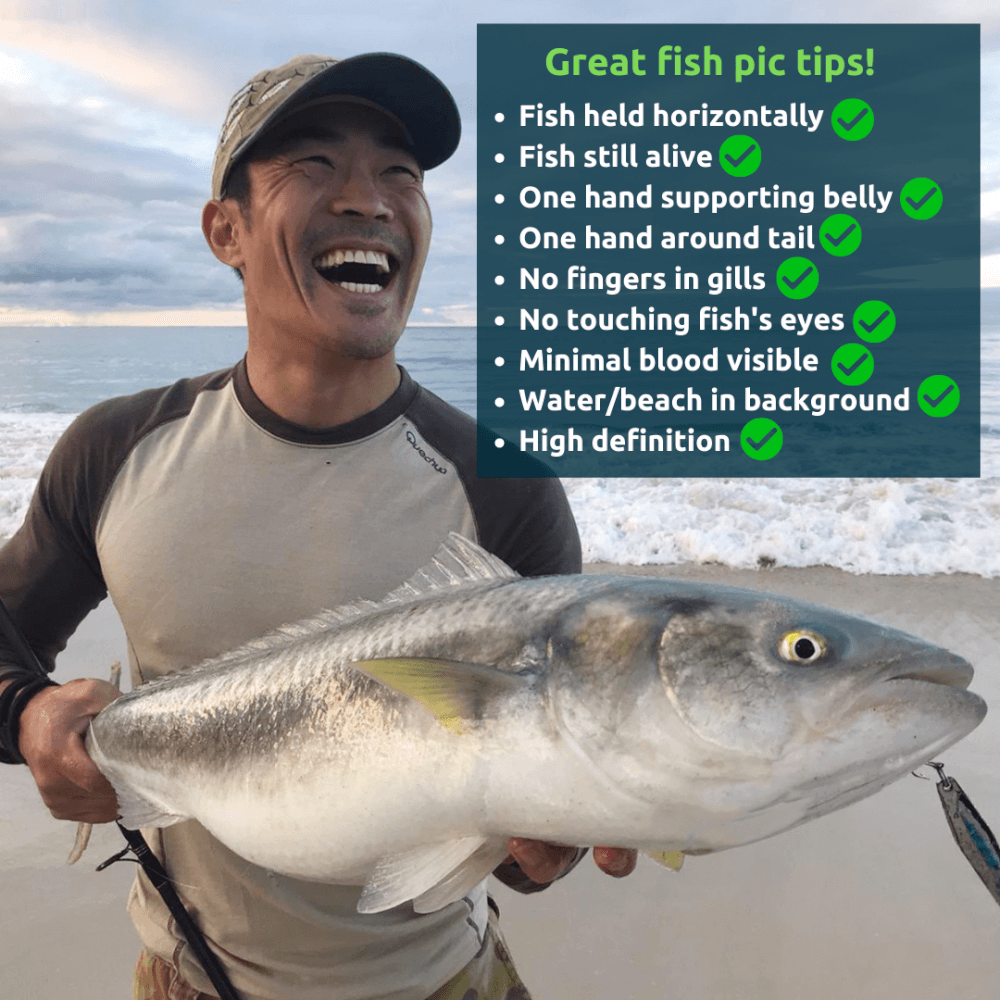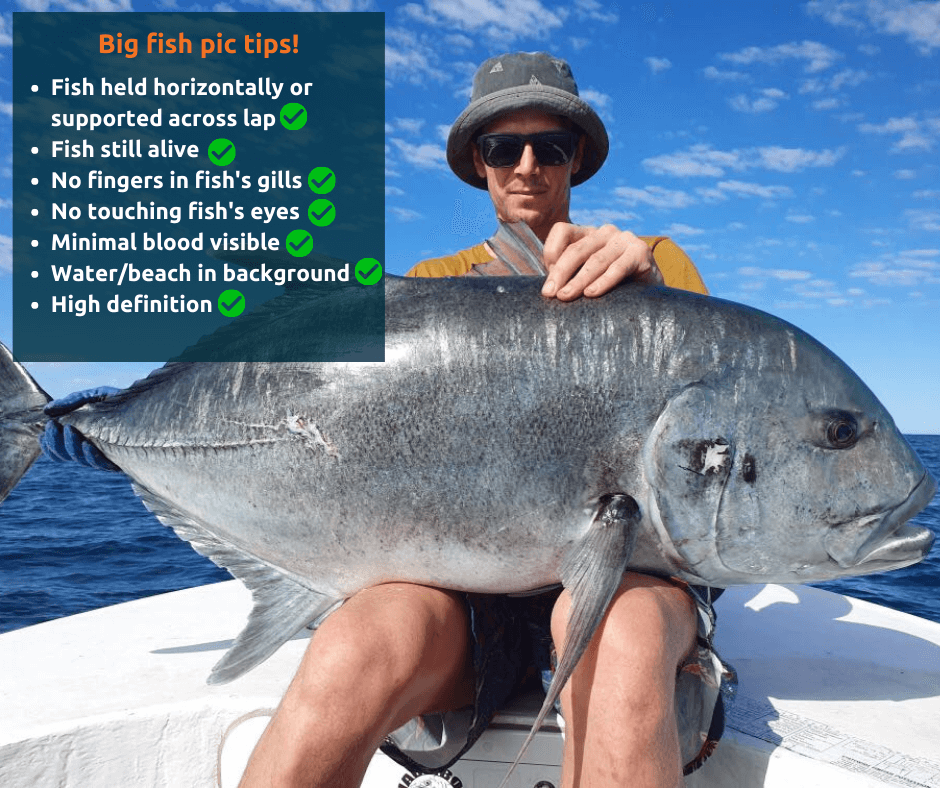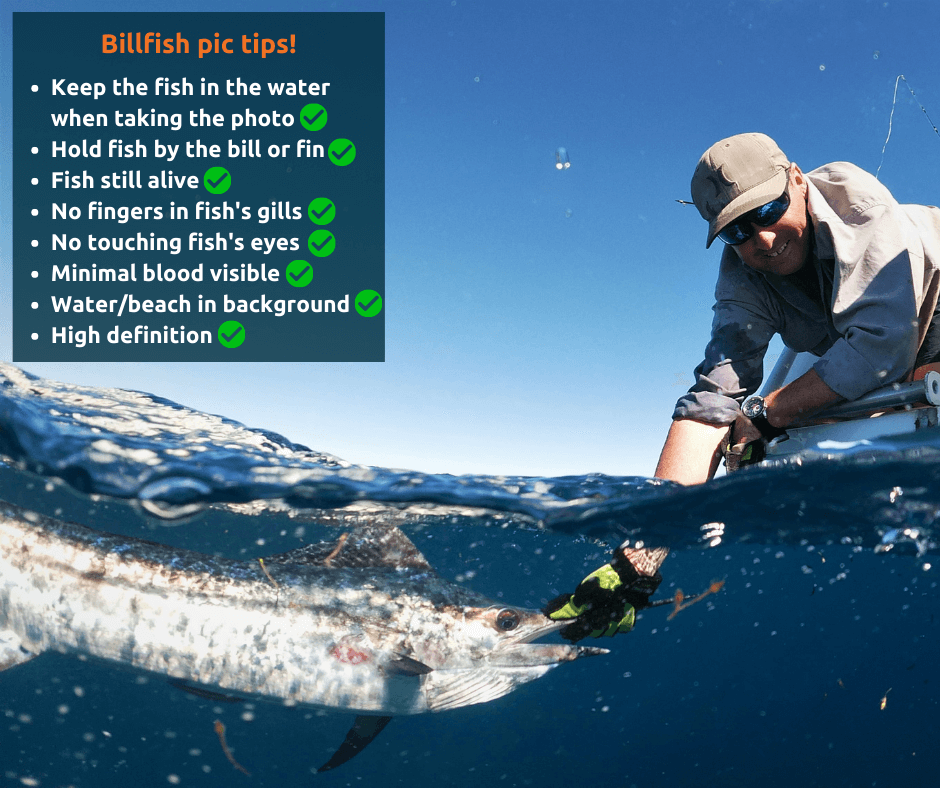As soon as you land a fish on the boat or land, it’s important to treat the fish with care and minimise the duration of stress resulting from direct handling.
If you’re wanting to take a snap of your catch, it’s also important to have the camera ready to go as soon as possible, especially if you intend on releasing the fish, to help minimise the risk of damage to the fish.
We all love showing off our fish, but you can do it by being more respectful to the fish as well as making your fish photos look much better to those who view them if you decide to share them across social media.
Check out some of the tips below for taking great photos of your fish!



How to handle fish with care
- Minimise fish handling as much as possible;
- Keep the fish in the water for as long as possible and, if practicable, remove the hook while the fish is in the water;
- If removing a fish from water, hold its body rather than its tail or gills and always try to support its body horizontally, as this will reduce the chance of damage to the gills and spine;
- Handle fish with wet hands or wet gloves (cotton or untextured), as this reduces the chance of damage to scales and mucus;
- Avoid using dry towels or dry clothing to ‘cuddle’ fish as this can cause serious damage, always try to ensure towels or clothing is wet when handling fish.
- If you must place a fish on a surface, place it on a cool, soft, wet surface where practical;
- If using fish grips, ensure the fish remains horizontal as it reduces the risk of spinal damage to the fish;
- Use long-nosed pliers to assist in hook removal, as this reduces handling time and damage to fish when removing hooks.
How to release fish properly with the highest chance of survival
- If a fish is throat or gut-hooked, cut the line as close to the mouth as possible;
- If the fish appears exhausted, place it horizontally in the water and push it through the water to move water over its gills;
- If a fish is clearly showing signs of barotrauma, use a release weight as this will increase the survival of released demersal fish.
See our release weight brochure here
How to dispatch fish humanely and improve eating quality
- Humanely dispatch fish immediately if you plan to keep them, as this reduces stress on the fish and increases the quality of the flesh;
- Minimise handling prior to dispatch, as this reduces stress on the fish;
- Methods for the humane dispatch of fish includes:
1) Ike jime (brain spiking), which results in immediate death and high quality flesh, and can be used on fish, crustaceans and cephlapods. Fish can then be bled to preserve flesh quality;
2) Cranial concussion with a blunt object and a blow of appropriate force which should render the fish unconscious and it can then be bled out;
3) Place fish in ice bath of a 3:1 ratio of crushed ice to salt water at a temperature of minus 1 degree Celsius for 20-30 minutes, this helps preserve the flesh and also makes fish easier to fillet.